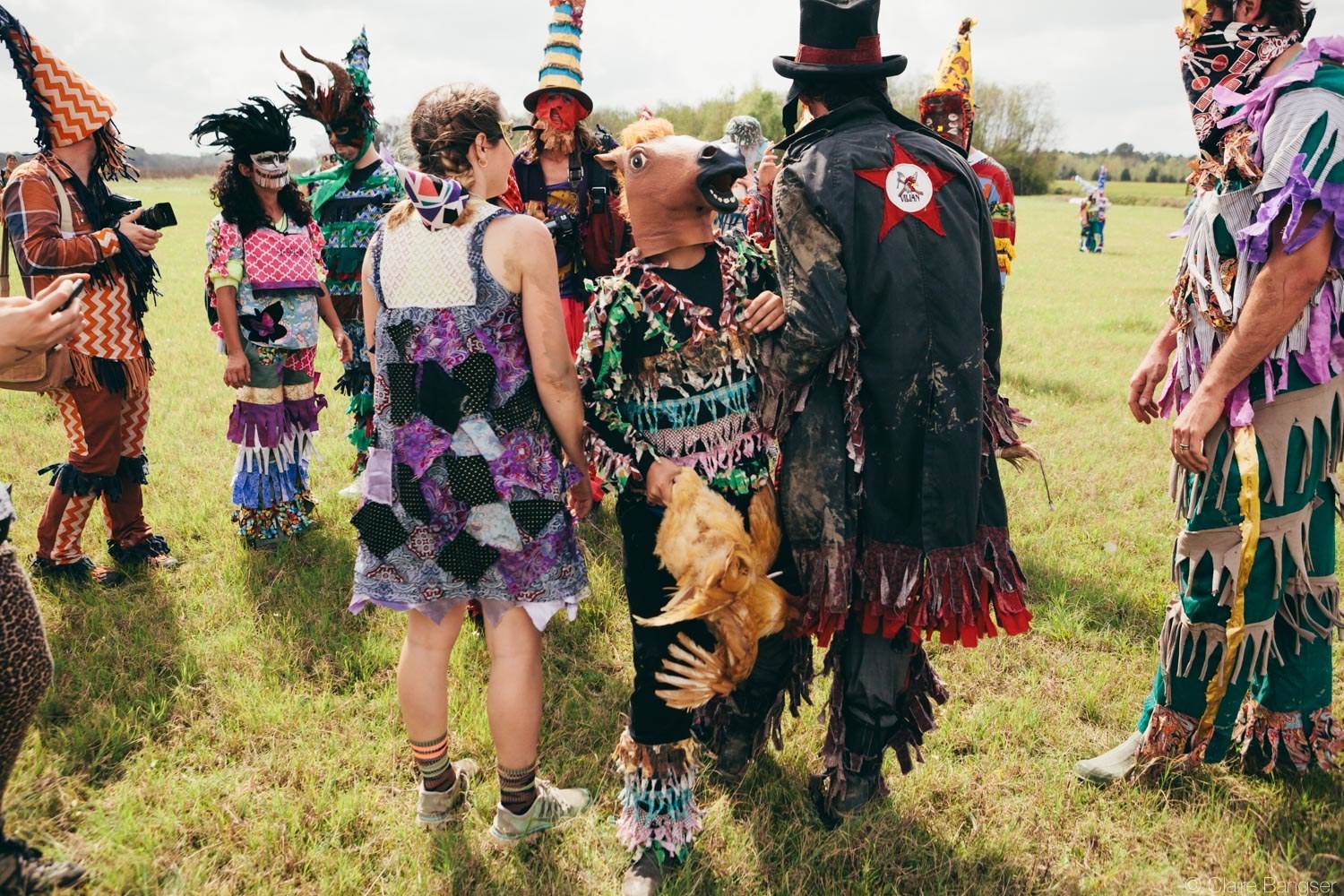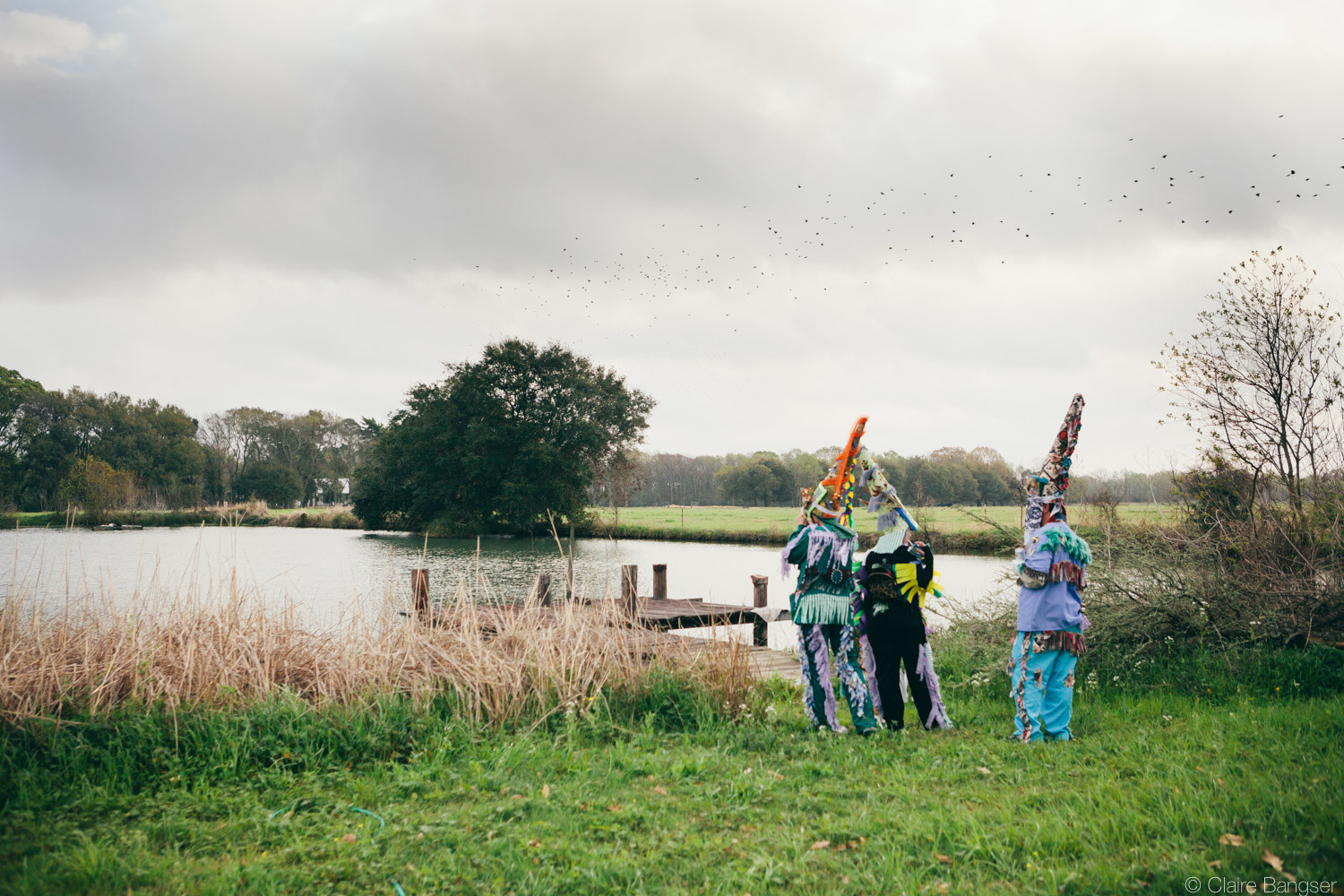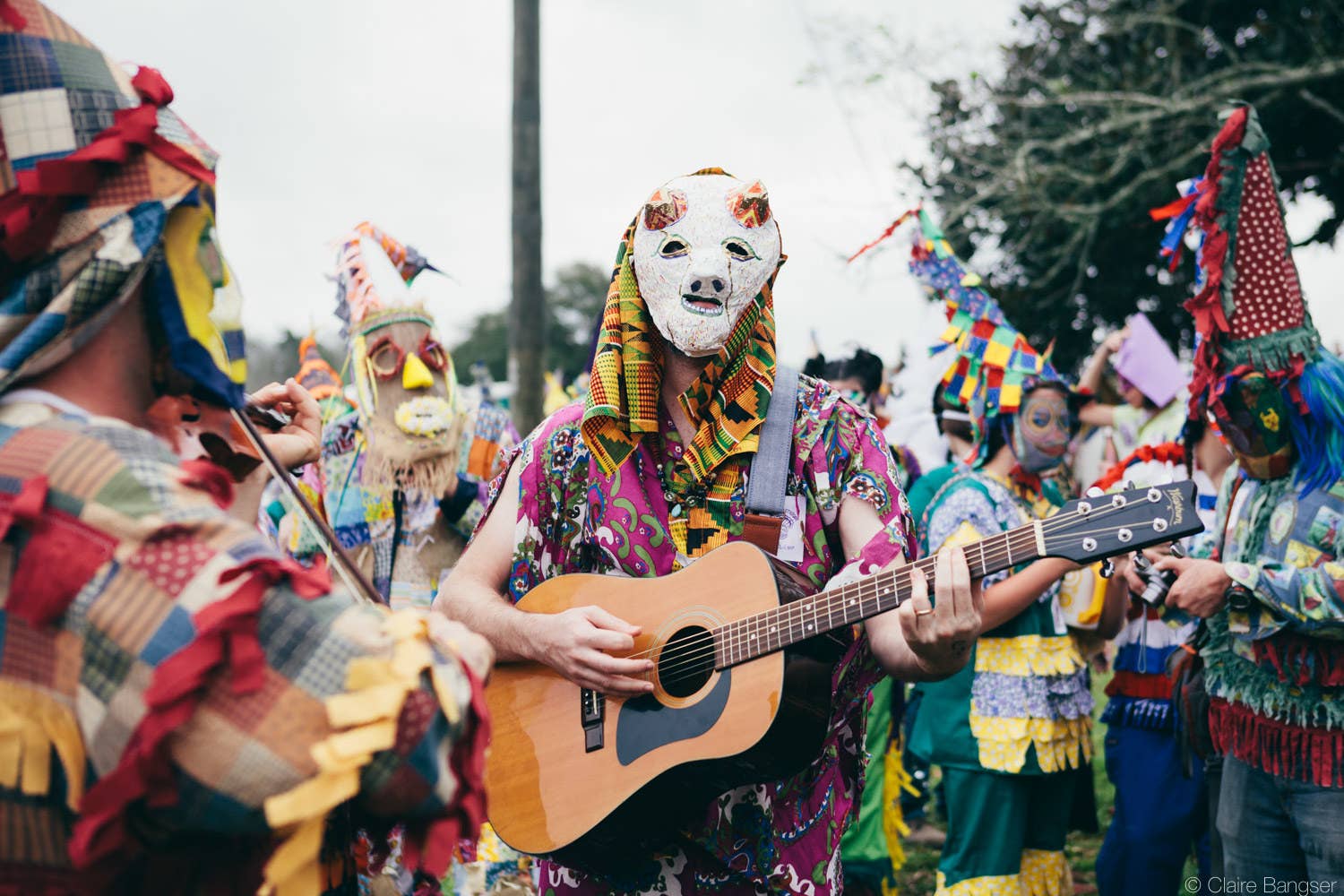
Courir de Mardi Gras is colorful and rowdy cajun tradition held in mostly rural communities of southern Louisiana on the Tuesday before Ash Wednesday. Its roots are found in medieval France, when after long, hard winters that depleted their resources, town residents would travel door to door asking wealthy landowners for donations, offering song and dance as a token of their gratitude. To conceal their identities in the face of nobility, revelers donned costumes, which over time have become more elaborate and colorful.
Like trick-or-treating on Halloween, Courir de Mardi Gras is a tradition that has transformed itself from generation to generation. While the traditions vary per town, at its heart this is a joyous celebration of community and an embracing of cultural values that help bind them together.
A particularly vibrant example of Courir de Mardi Gras is the Faquetigue Courir de Mardi Gras, organized by musician and producer Joel Savoy near the town of Eunice, Louisiana. New Orleans based photographer Claire Bangser attended last year's event and captured firsthand this unique celebration. Here, Bangser shares those pictures with BuzzFeed News and speaks about her experience with this uniquely cajun tradition.
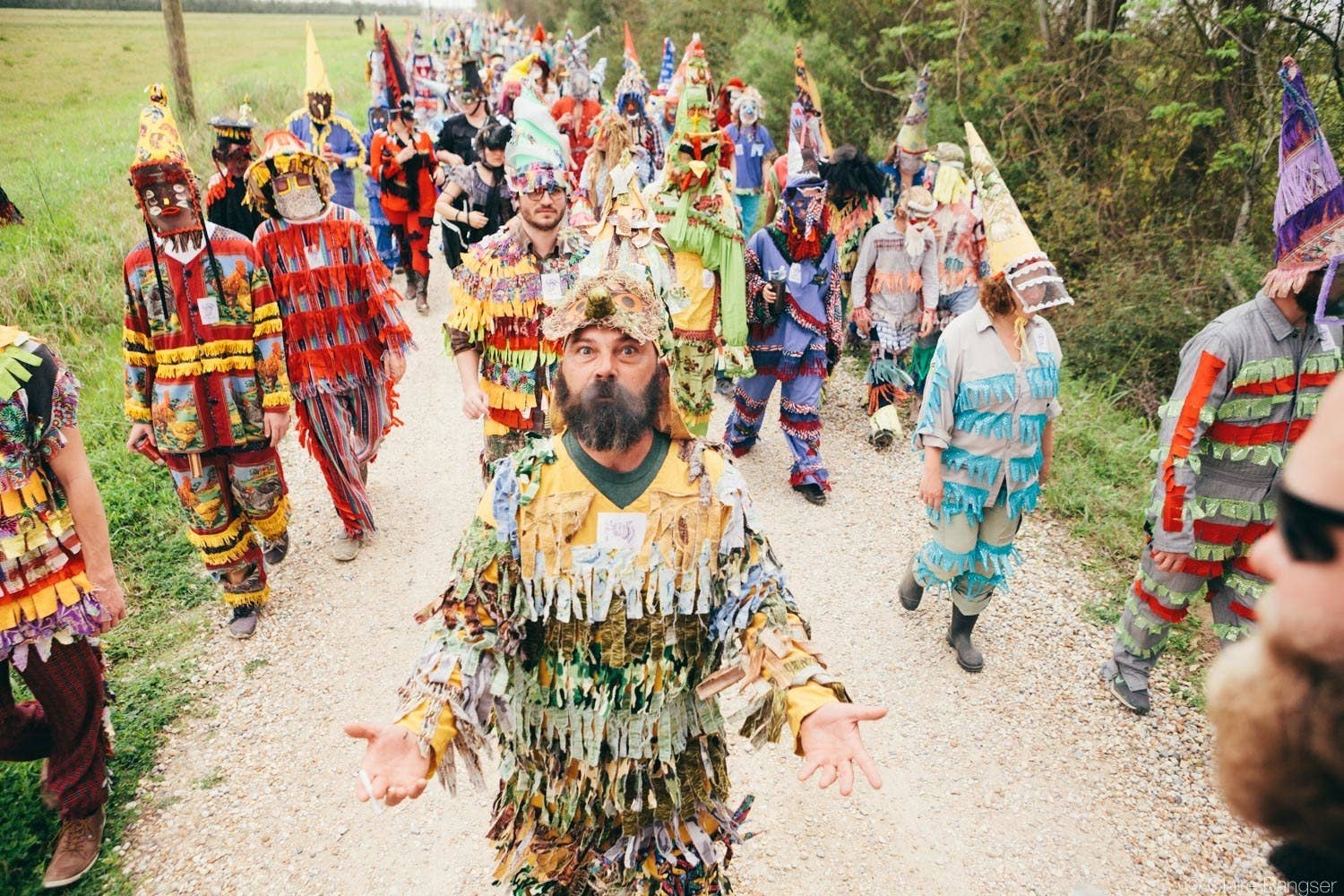
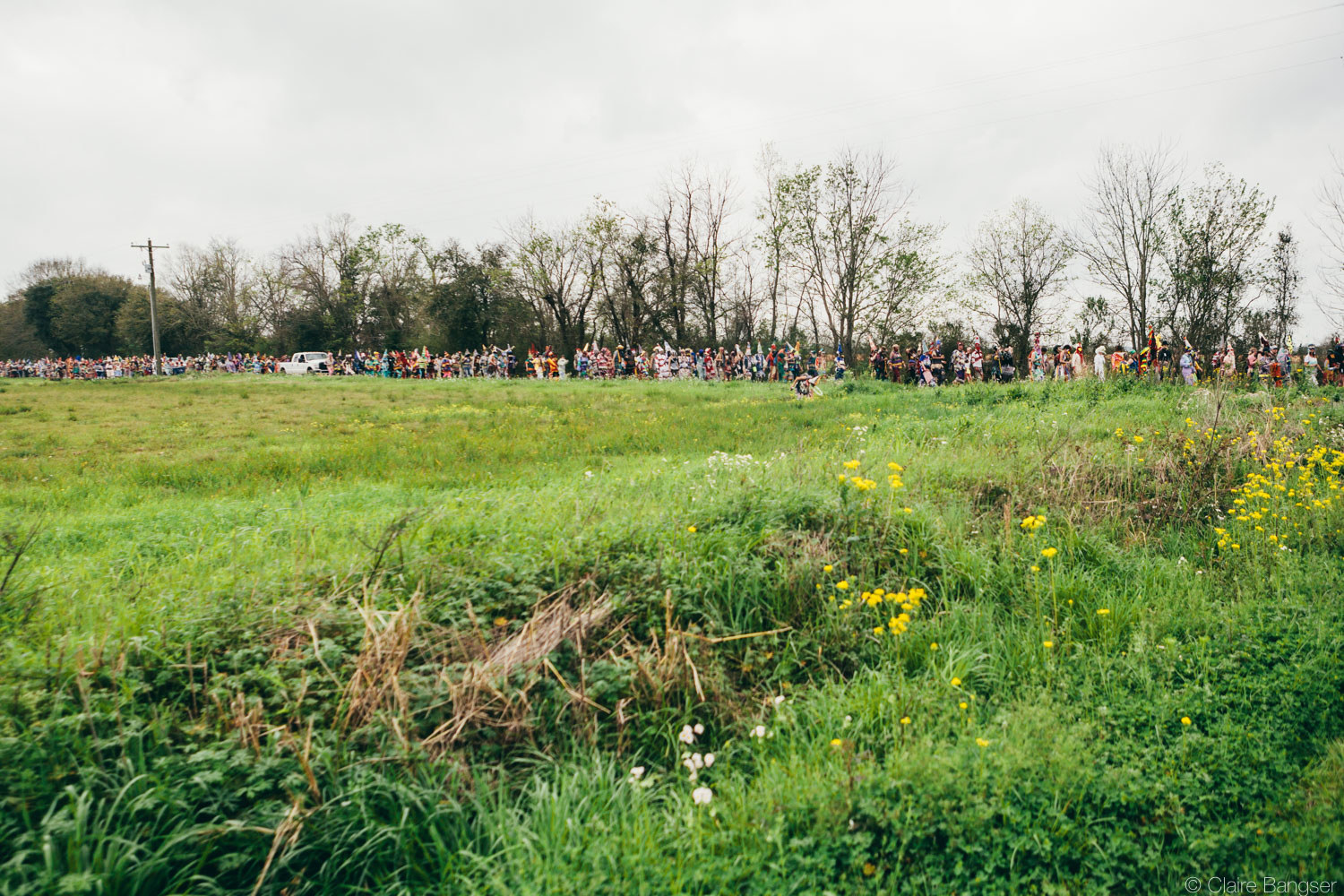
I made this series of images on Mardi Gras in 2017 when I decided to venture to Eunice, Louisiana, with some friends to experience Cajun Mardi Gras. I was completely blown away by the experience, and happy to have my camera on my shoulder as we trekked miles through the countryside on a hot day, chasing chickens, rolling in the mud, singing, dancing, and begging door to door for food!
It was one of the most intense and full-hearted traditions I've ever had the privilege to experience.
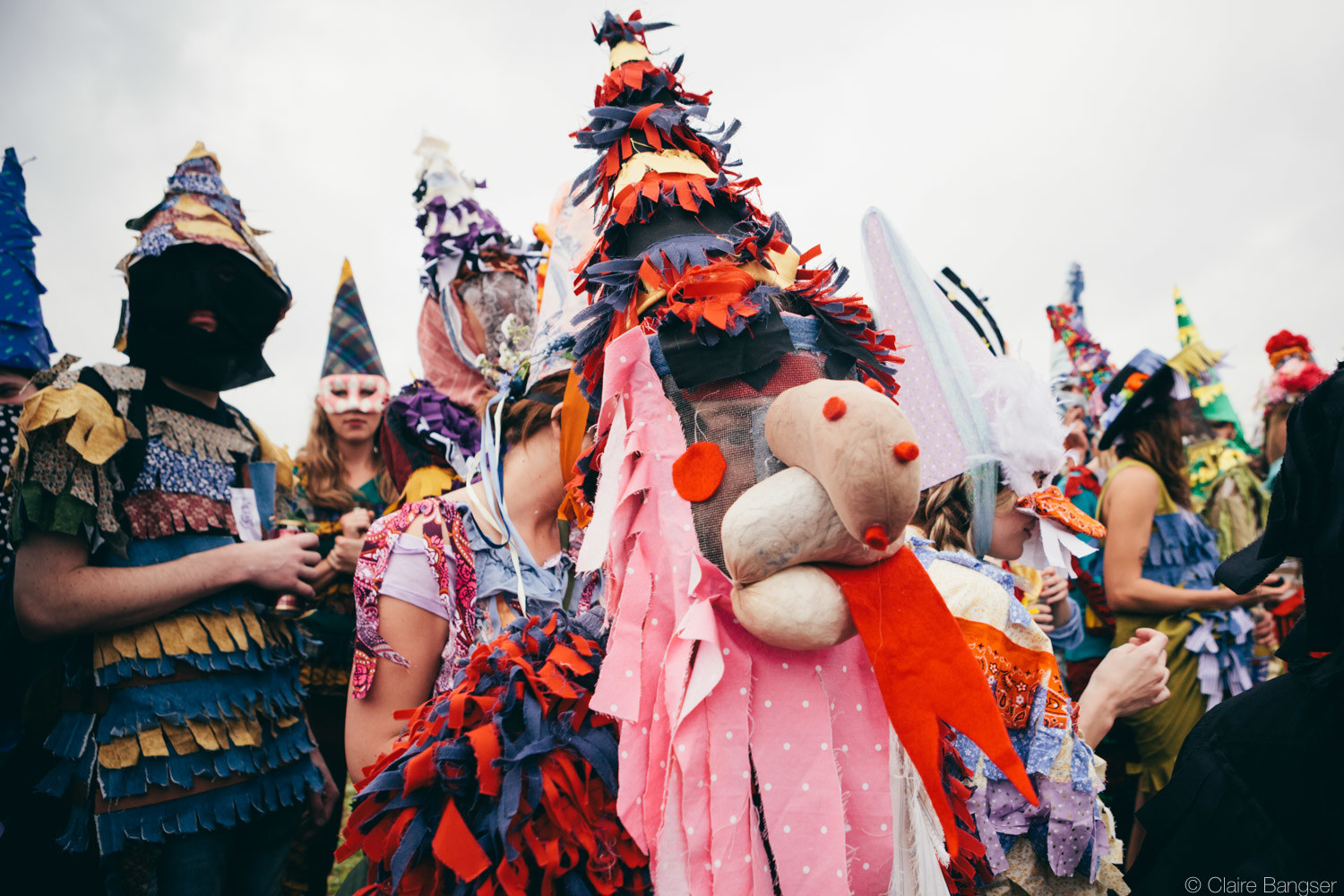
I camped with friends on Joel Savoy's land, the organizer of the Faquetigue Courir de Mardi Gras — which is the start and end point of this particular Courir. I went to sleep Monday night thinking that I'd get some solid sleep beforehand.
Sometime in the middle of the night, I woke up to the most beautiful music. I envisioned a campfire outside my tent with people playing Cajun fiddle tunes, singing and dancing in the field. I laid there for an hour or so just listening, and then decided I couldn't bare to not be part of it. But when I got out of my tent and looked around, there was no campfire to be seen, not even a flashlight. I walked toward the music and found a small string band standing in the large open field, playing to a small group of listeners, completely in the dark.
The traditional Mardi Gras music continued all night, and all night I felt this heart-bursting sensation and a deep gratitude to get to partake in such a special tradition.

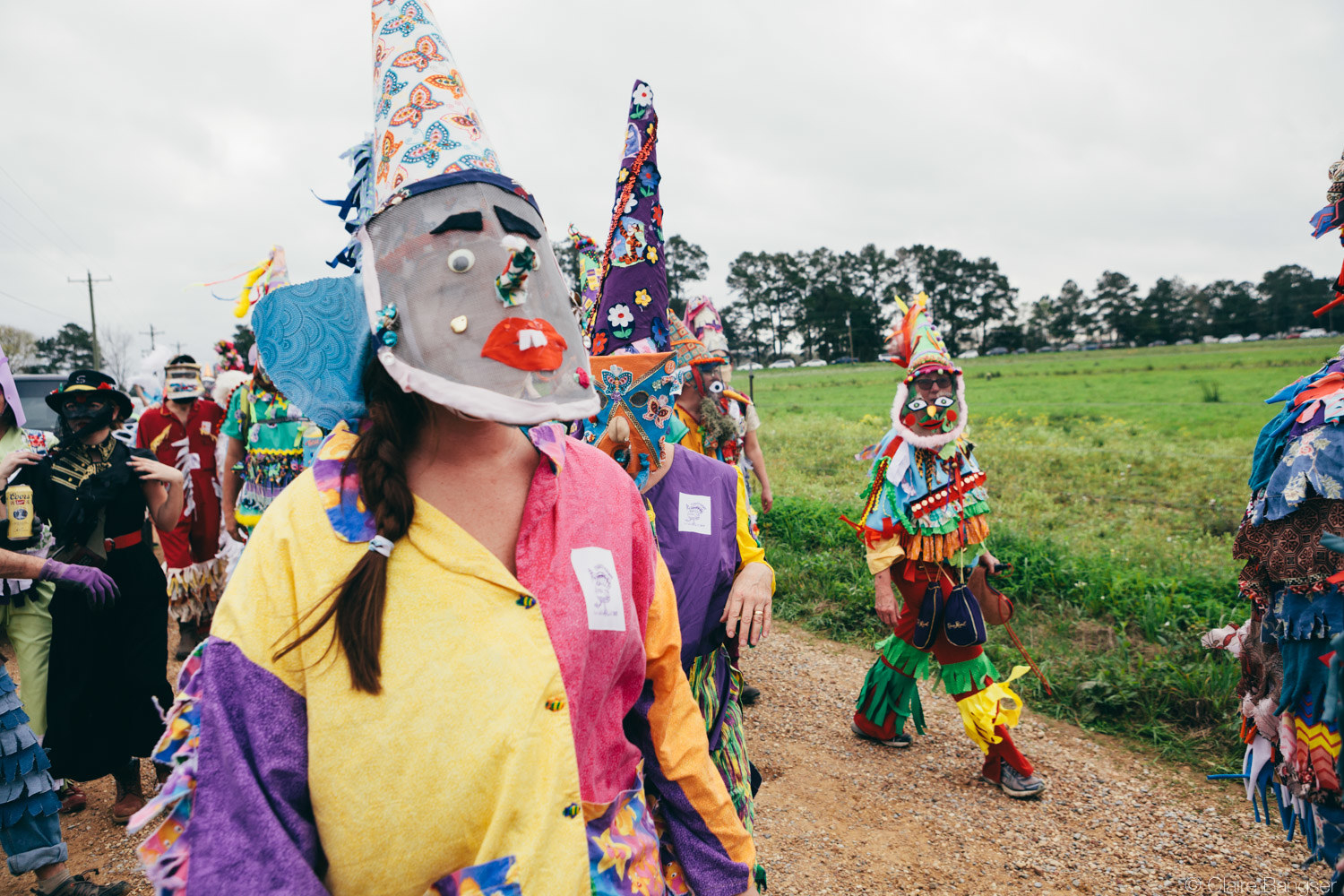
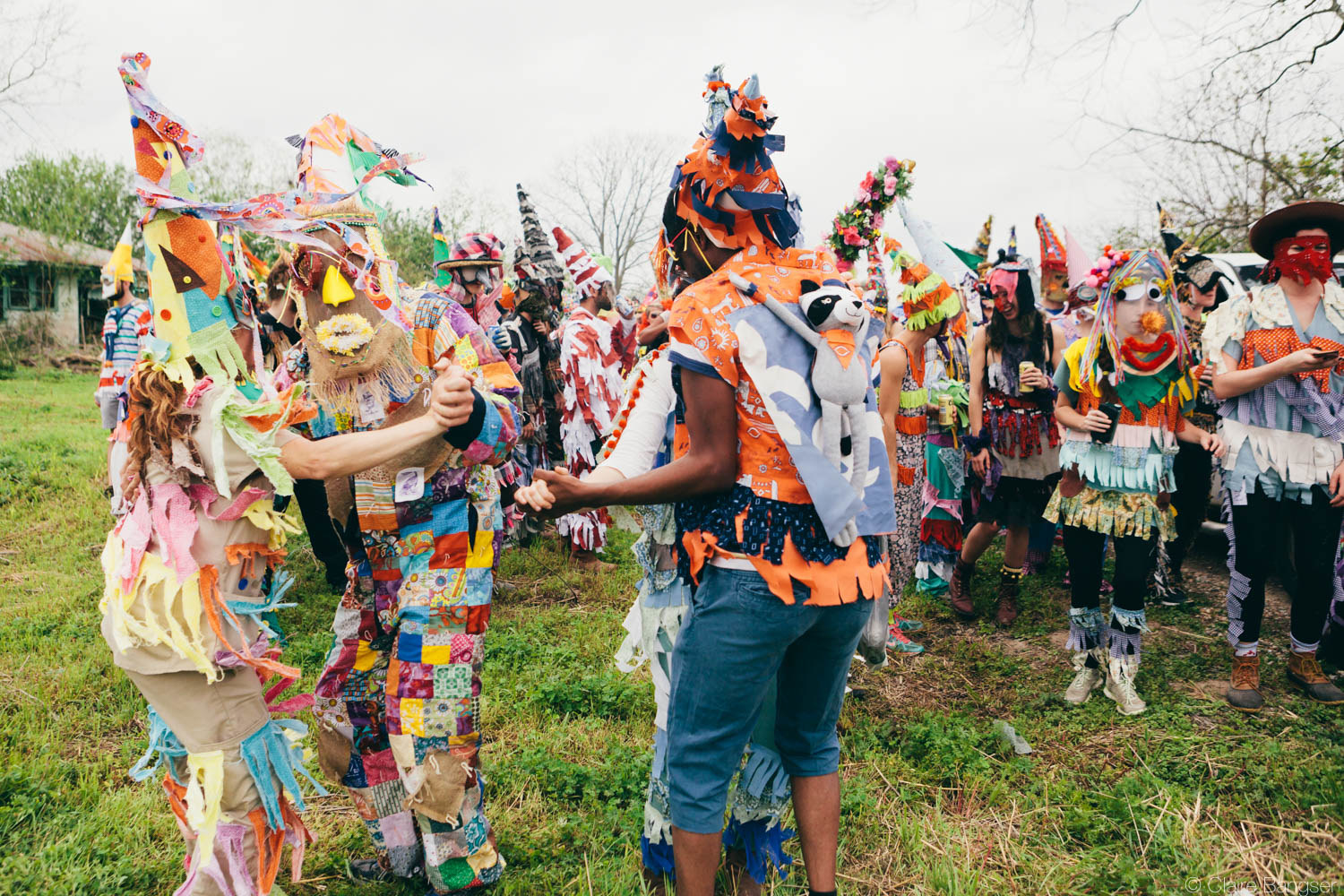
Around 6 a.m., the Mardi Gras "Villains" began running around the tents of folks camping on the land, screaming "Wake up, Mardi Gras! It's Mardi Gras!" In the Cajun tradition, everyone is called "Mardi Gras" on Mardi Gras day. We proceeded to put on our costumes (the tradition is to wear fringe that looks like colorful peasant clothes and masks) and then began a six-hour long "Courir" through the country side, going from house to house and getting down on the ground to beg for food.
At some houses, the families would throw live chickens our way, which our increasingly drunken group of 700- to 800 people would chase down and bring to the Capitaine (the Mardi Gras leader on horseback).
All of the ingredients we gathered were meant to go into a giant gumbo at the end of the route. After receiving food, string bands would play traditional Mardi Gras tunes and we'd all sing and dance in gratitude. It's a wild, raw, and beautiful expression of a deeply important cultural tradition.
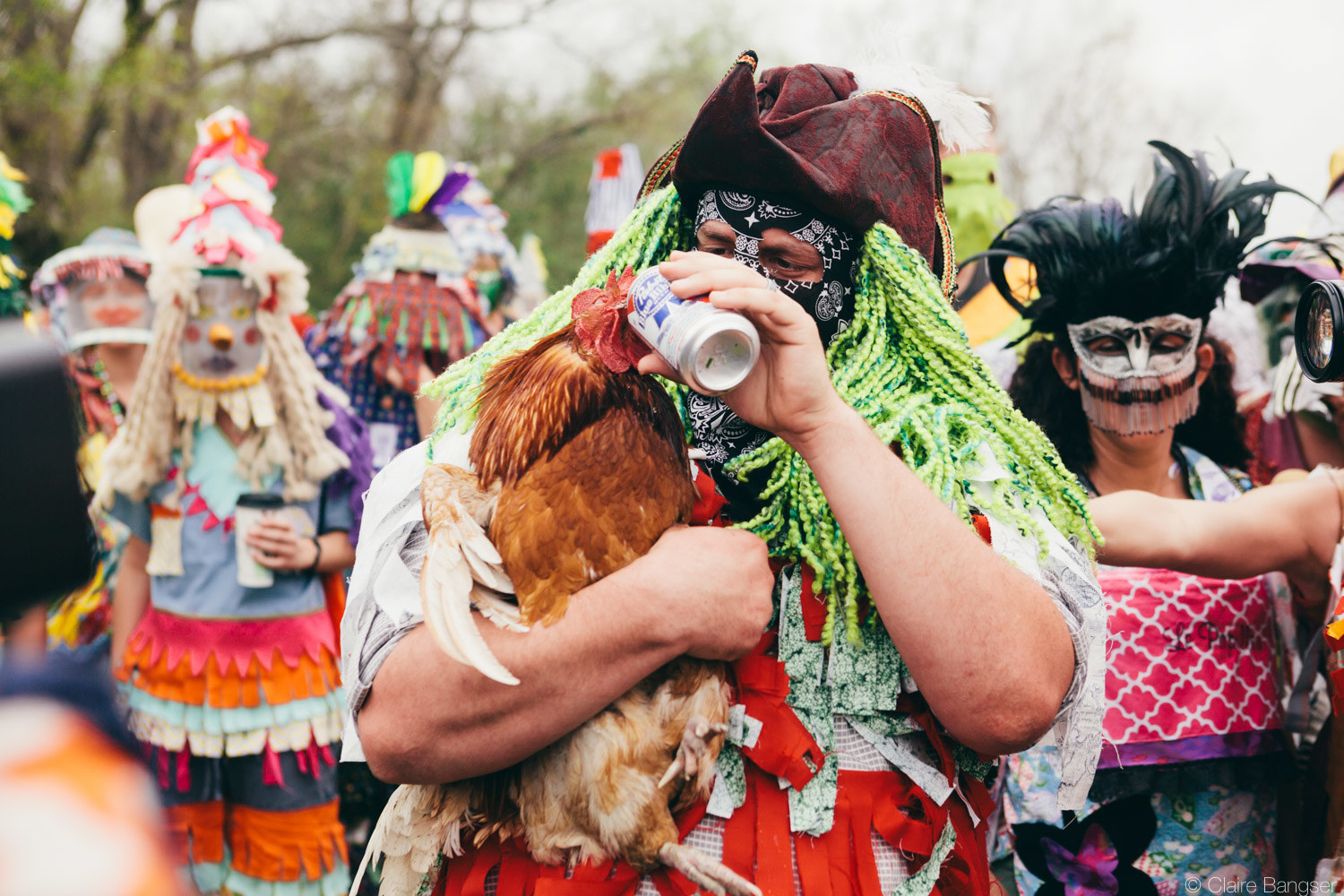
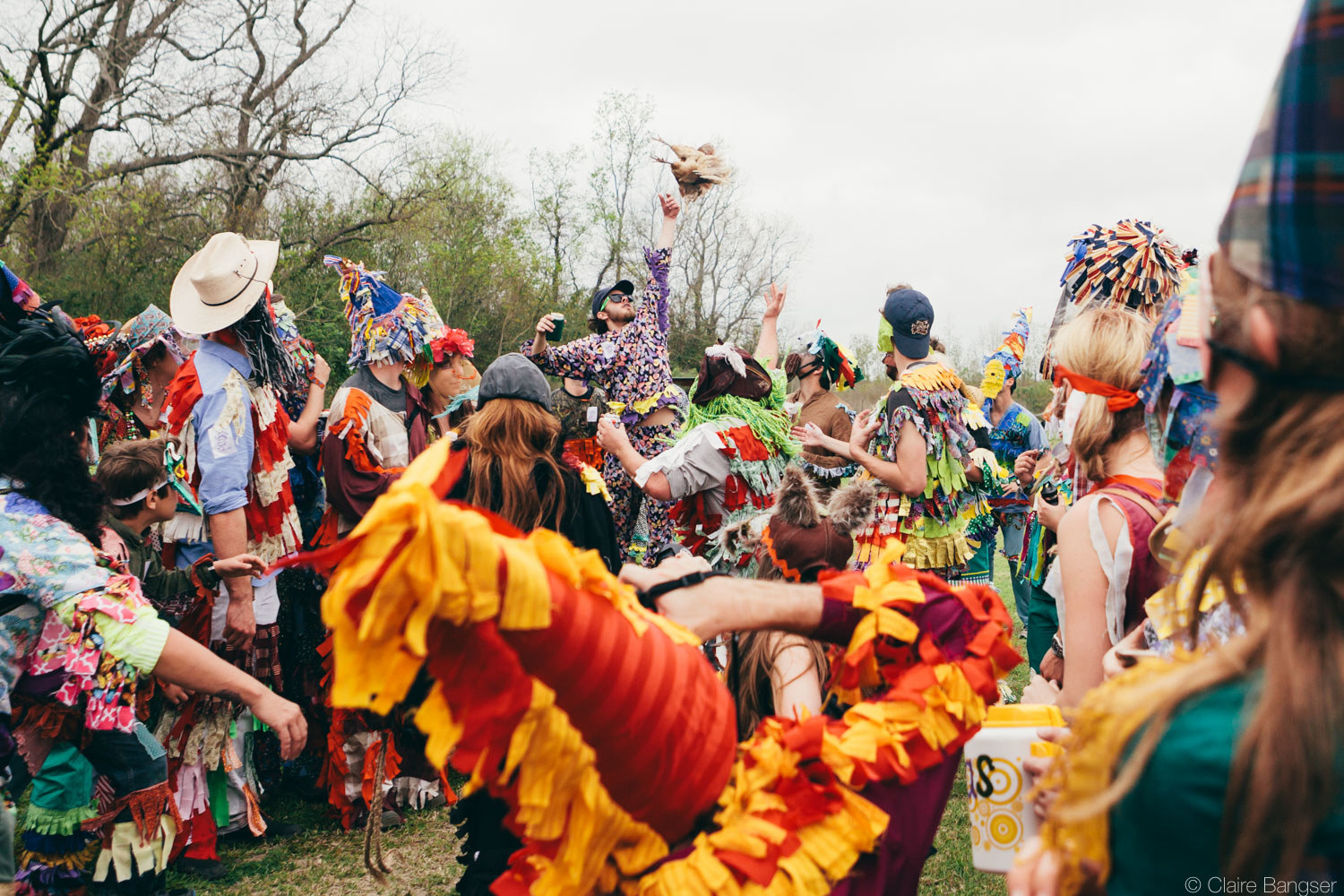
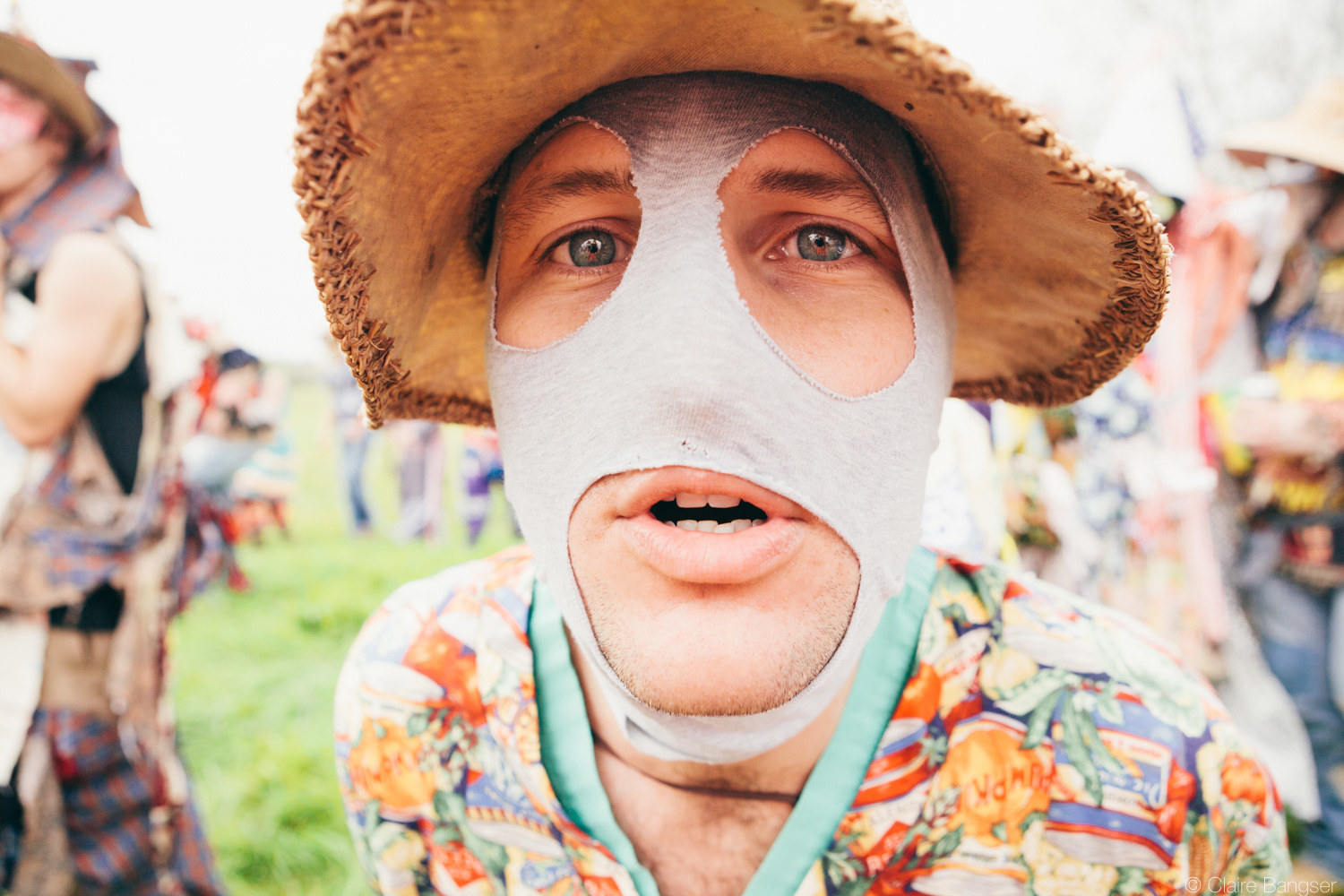
When I first moved to New Orleans six years ago, I fell in love with the vibrant, creative forms of cultural expression bursting from all corners of the city. I was inspired to dive in and soak up as much as I could of this place, so four years ago, I started a street portrait project called "NOLA beings" which sought to document the stories of everyday people I met on the street.
I have interviewed well over 1,000 local New Orleanians in that time. Through this work, I've discovered a passion for telling human stories that move and unite people across perceived divisions, and I've challenged myself to make images that showcase the unique spirit of this place and its people.
Because of my passion for people and storytelling, I work to make genuine connections with the folks I photograph. Almost everyone is someone whose story I'm interested in, and who I've spent time listening to. I feel most rewarded when the people I'm photographing reveal a spark of their personality in front of the camera because of their trust in and connection with me.
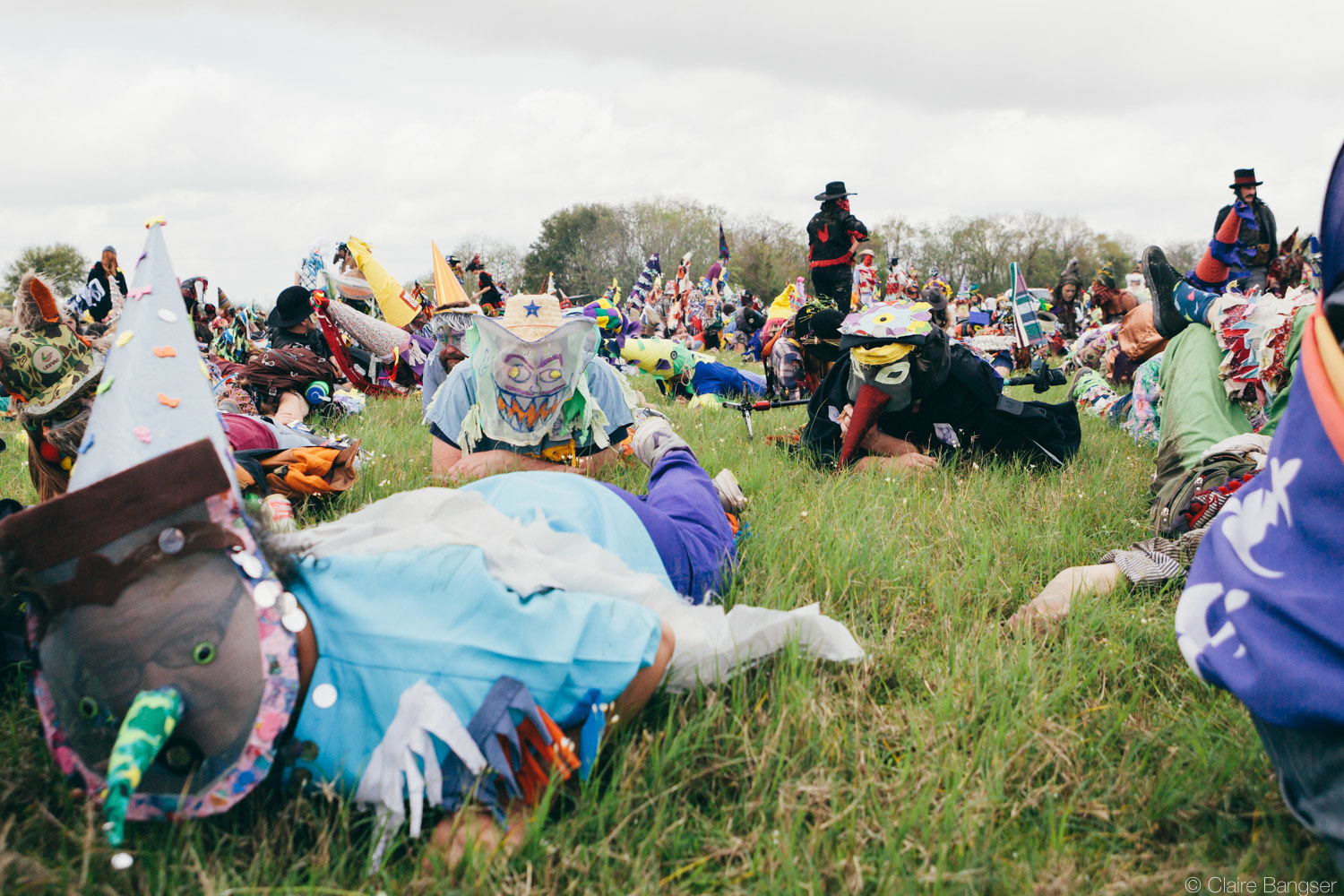
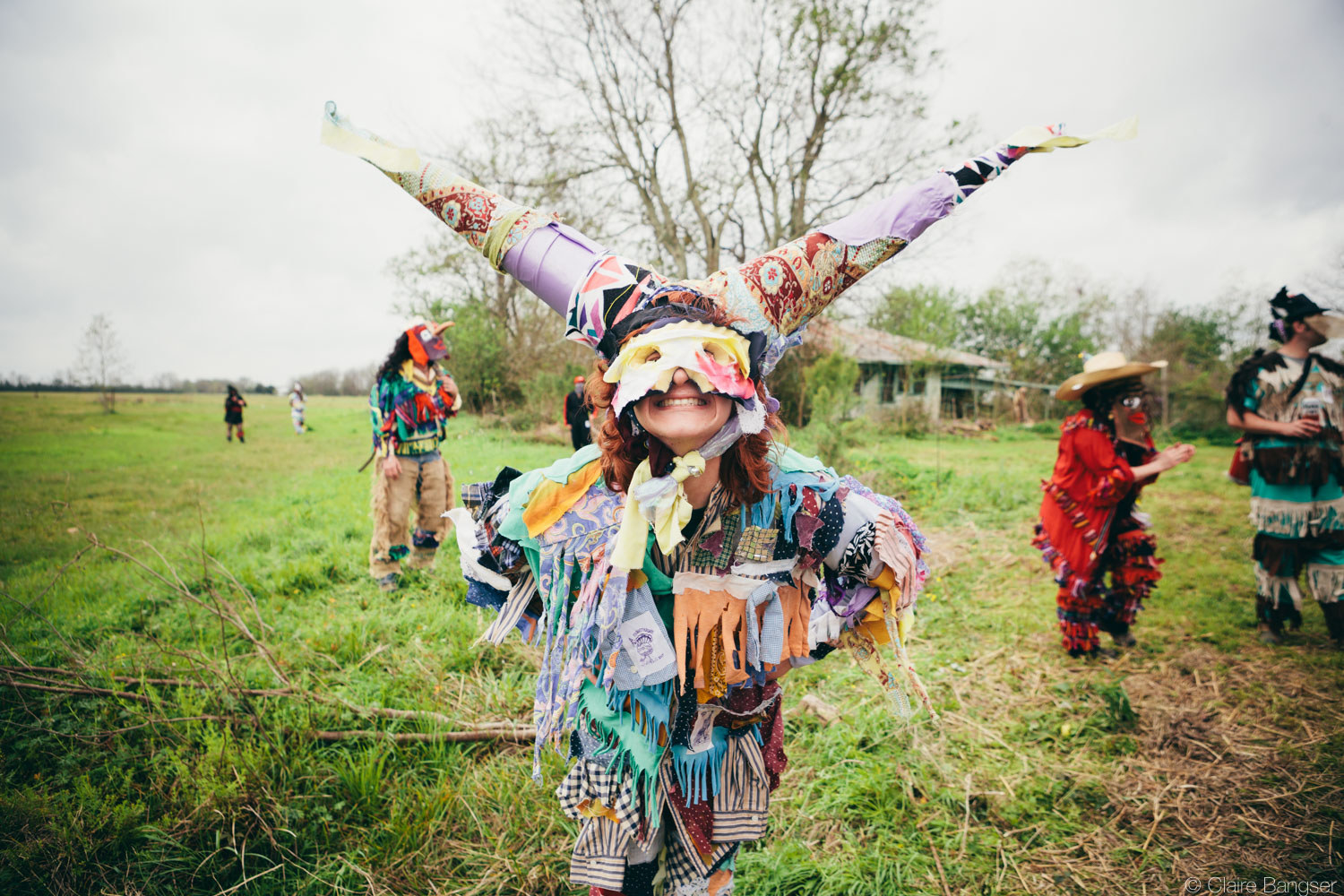
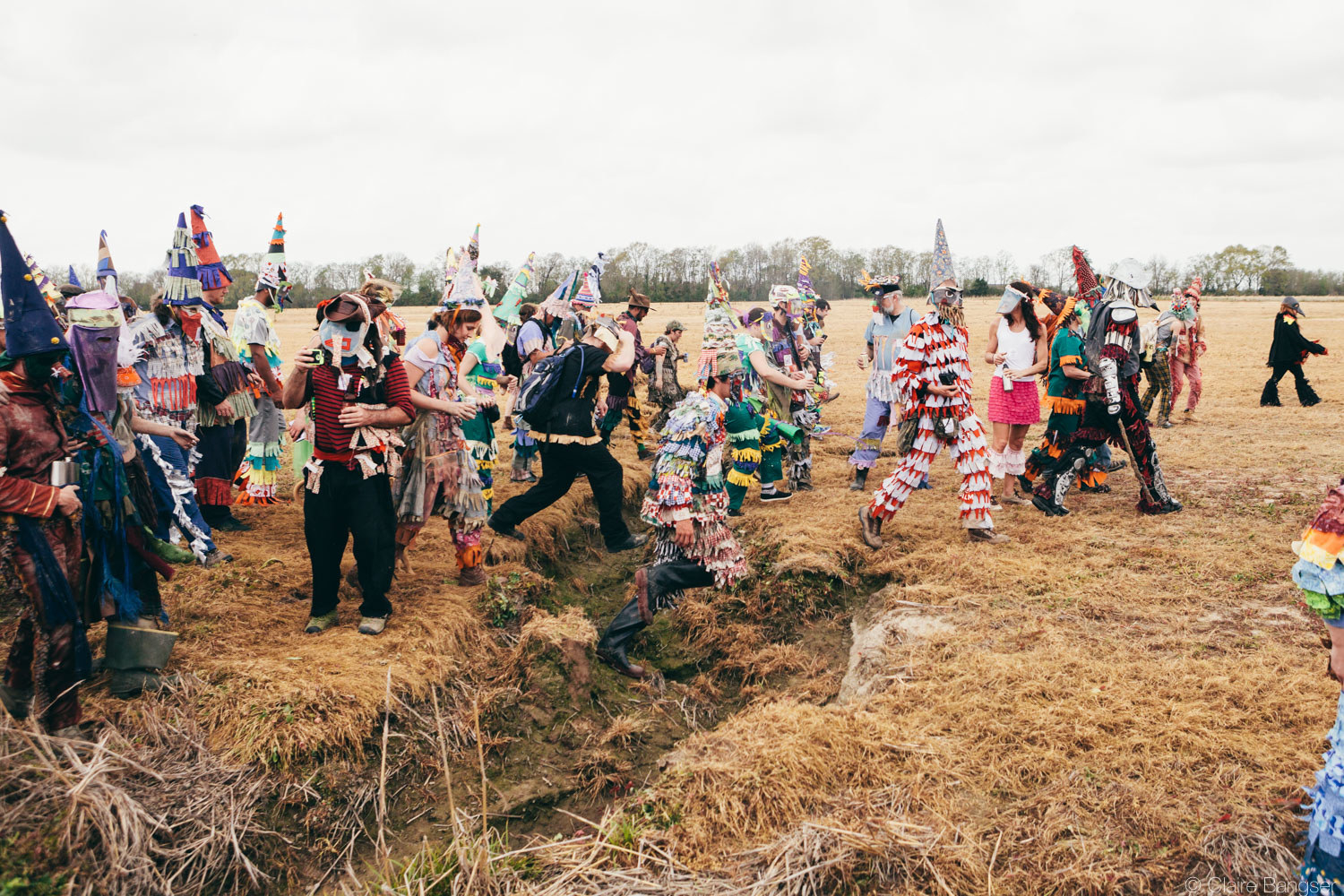
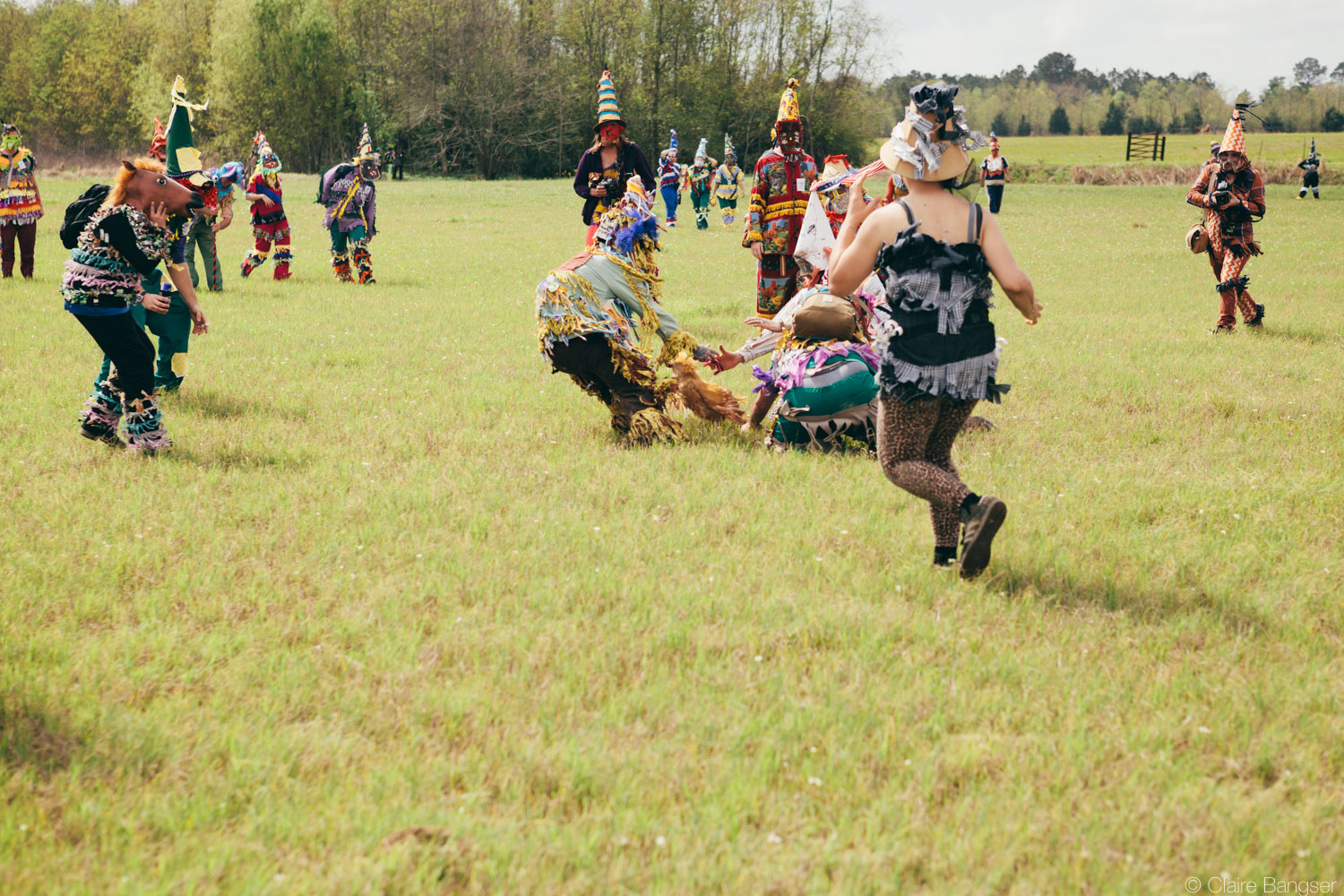

Documenting this event was a unique challenge for me as a photographer because all participants in the Courir are required to wear masks, and I am naturally drawn to faces. I found myself seeking eyes in the crowd and had to work harder to make connections with my subjects through the physical barriers of color and mesh and fabric between us. Even more difficult: I was wearing a mask too!
As a complete outsider to the tradition, I was kept on my toes, not knowing what was going to happen next in a series of increasingly wild events. For example, one event on the Courir involved a massive group effort to climb a greasy pole to release a chicken in a cage at the top of the pole. Once the chicken was released, everyone chased after it. All day, in fact, we were chasing chickens to throw into the gumbo pot for our Mardi Gras feast.
Everything about this event was entirely unexpected. It's my hope these pictures spark a curiosity to learn more about this tradition, and a recognition that we have some pretty amazing and unique cultures in Louisiana.
